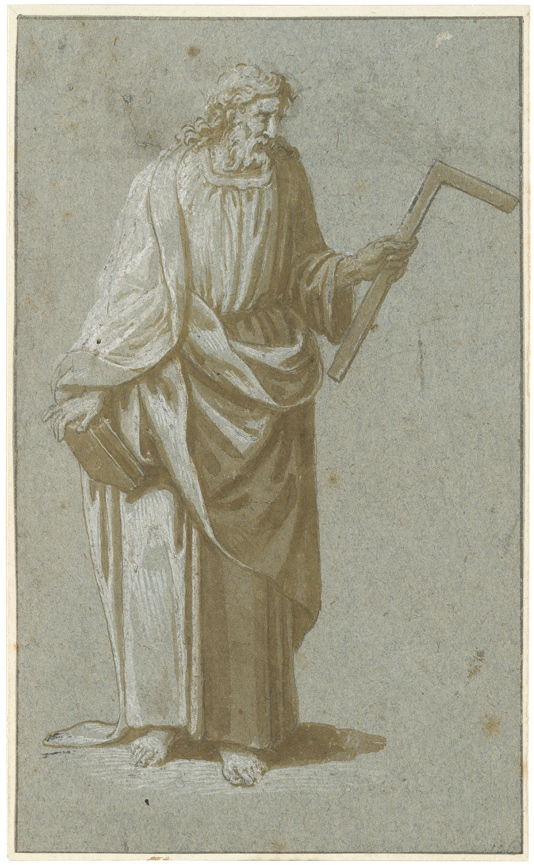Loading the page ...
Biagio delle Lame
(also known as Biagio Pupini, 1511–1575, Bologna)
The Apostle Thomas. Point of brush in brown over graphite, white heightening, on blue paper, mounted on a supporting cardboard. 15.9 x 9.6 cm. Circa 1530.
Vasari said of the Bologna painter, Biagio Pupini, that he was a “man who was more experienced than outstanding”. Pupini studied under Francesco Francia in Bologna, after which he and a fellow student, Bartolomeo Ramenghi, known as Bagnocavallo, went to Rome, where Pupini was strongly influenced by Raphael and his school. Biagio was also a very productive draughtsman. Most of his efforts are pure study drawings, which the artist made for training purposes. Thus during his stay in Rome he created a fair number of reproductions after the façade paintings of Polidoro da Caravaggio, whose style he made so completely his own that many of his drawings used to be attributed to Polidoro. Nevertheless Pupini as a draughtsman did have clearly recognizable artistic mannerisms, such as edgy, nimble linework and a predilection for white heightening on coloured paper. After his return from Rome the artist worked mainly in Bologna and the Emilia Romagna and took part with such colleagues as Bagnocavallo and Girolamo da Carpi in the embellishment of ecclesiastical architecture in this region.
The present drawing belongs to Pupini’s early work and can be dated at about 1530 on the basis of an engraving by Marcantonio Raimondi showing the same composition in reverse (Bartsch XIV, 118, 132). As the last mention of Raimondi was in 1534, it seems plausible the drawing was done in this period. It may be that this drawing, despite its different format, served as a modello for the engraving. The fact that the drawing is a mirror image of the engraving might be said to support this assumption. In general, Pupini’s drawings are freer and more robust in style, while this drawing is more careful and focused. The subtle use of half tones and the careful use of white heightening, which is applied in parallel hatchings, permit the conclusion that the drawing might have served as an original for an engraver. Raimondi’s engraving does, however, show a change in the drapery of the Apostle’s left sleeve, making it cling to the arm instead of hanging loosely. This simplification indicates that the engraver was evidently able to allow himself certain artistic freedoms in relation to the original.
Biagio Pupini’s authorship has been confirmed by Nicholas Turner.
